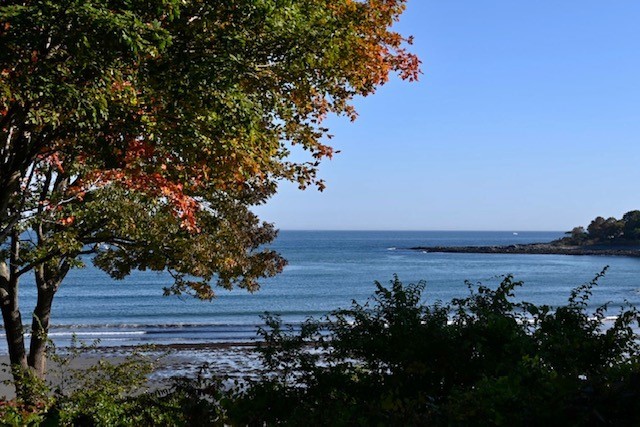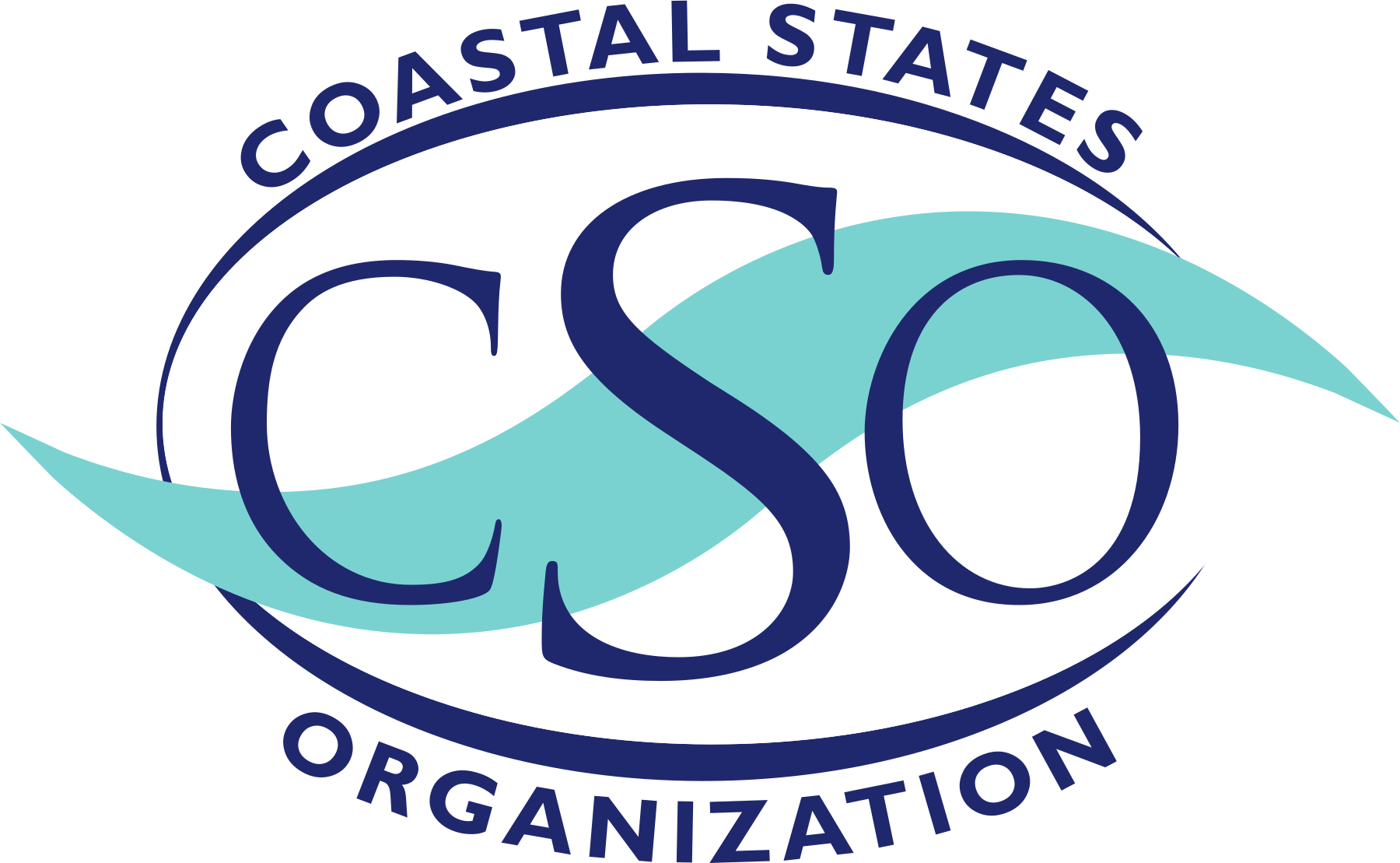Rob Porro was a 2022 Knauss Fellow as the Coastal Hazards and Mitigation Specialist with the Federal Emergency Management Agency and Coastal States Organization. Rob has shared details from his experience with CSO and FEMA, what he worked on, and what he learned.
Bridging Two Worlds from the Capital: My Experience as a Knauss Fellow

Managing our coasts is a huge undertaking spreads across multiple professional fields and government agencies. Protecting natural and cultural resources, managing coastal land use, ensuring public access to our shorelines, fostering a sustainable coastal economy – these comprise the world of coastal managers. Besides the benefits and enjoyment living along the coast brings, it also brings with it the risk of hazards such as erosion, flooding, and hurricanes. Planning for these hazards also falls within the mission of coastal management, and, as climate change impacts are felt, has increasingly risen in urgency and importance. This aspect of coastal management abuts another professional world – that of emergency management and hazard mitigation. The world of emergency managers consists of helping communities prepare for, respond to, recover from, and mitigate the risk of natural hazards and disasters. Because of their exposure to hazards, much of this work occurs in coastal communities. Although coastal management and emergency management have
aligned interests along the coasts, coastal planning and mitigation efforts have often occurred in stove-piped fashion with government agencies staying within their traditional lanes of responsibility without much coordination or interaction. This is slowly changing as the need to maximize resources to adapt to increasing hazards is recognized. Many, if not most, of the resources available for mitigating hazards along the coast come from the emergency management and hazard mitigation world – a world represented federally by the Federal Emergency Management Agency (FEMA). With coastal hazards rising in priority within coastal management, FEMA programs and resources have become ever more important for coastal communities and coastal managers.
It is at the intersection of these two worlds where I’ve spent the last 12 months as a Sea Grant Knauss Fellow, having been placed in a joint-position with the Coastal States Organization (CSO) and FEMA’s Community Infrastructure Resilience Branch (CIR). CSO is a non-profit organization based in Washington, D.C. which represents and supports state and territory coastal management programs across the U.S. CSO accomplishes this by advocating for and helping to develop federal policy to strengthen coastal management, providing capacity-building and knowledge sharing opportunities to coastal managers, and conducting policy research and project work that targets at-need coastal states and communities. FEMA’s Community Infrastructure Resilience Branch falls within the Hazard Mitigation Assistance Division under FEMA’s Mitigation Directorate and Office of Resilience. The CIR Branch provides Headquarters-level coordination for the Public Assistance Mitigation program, a post-disaster relief program to help states and communities build back better following a disaster. The CIR Branch also supports agency efforts related to climate change resilience and nature-based solutions. The objective of this unique joint Fellowship position is to help create a ‘bridge’ between coastal managers and FEMA’s hazard mitigation resources.
Building a Bridge
Creating this ‘bridge’ involves both making sure state/territory coastal managers are aware of and understand the myriad resources available to them and also ensuring FEMA programs recognize the unique needs of coastal communities and the importance of including their voices in policymaking. The FEMA/CSO fellow helps to build this bridge by coordinating a CSO Coastal Hazards Planning & Adaptation Work Group, disseminating information on FEMA resources, and identifying the needs of coastal management programs. The CHPA Work Group is a CSO forum of state/territory coastal management staff that works specifically on coastal hazards and climate change planning in their states and communities. This work group provides a venue to share federal policy and resource updates with coastal managers, a forum for coastal managers to share lessons and best practices with each other, and a space for dialogue between coastal managers and guests from federal agency partners, such as FEMA, NOAA and others. Being within the FEMA organization, I have been ideally placed to learn about new FEMA resources as well as identify opportunities to share insights from coastal states as those resources are developed through coordinating

Rob Porro presenting at the CSO Membership Meeting in Portsmouth, NH
listening sessions or incorporating coastal state input in policy comment letters. Examples of programs highlighted this year through this communication ‘bridge’ include the new FEMA State and Local Hazard Mitigation Planning Policies, the Building Resilient Infrastructure & Communities (BRIC) selections and funding opportunities, the new Safeguarding Tomorrow Revolving Loan Fund Program, and opportunities to comment on the Public Assistance Mitigation program, among others.
Listening and identifying the unique needs of coastal states and communities is an important part of this position. This happens not only within the CHPA Work Group, but also at CSO semi-annual membership meetings and coastal conferences. This year I was able to attend two CSO membership meetings (Washington, D.C. and Portsmouth, NH); the American Shore and Beach Preservation Association (ASBPA) National Coastal Conference in Long Beach, CA; and the National Adaptation Forum in Baltimore, MD. At these meetings and conferences, I was able to meet coastal managers and planners from across the country. I not only learned from the numerous presentations and discussions, but I also facilitated conversations around coastal hazards planning and presented on my own academic research on adaptation planning on islands.

CSO Members and guests on site visit of a living shoreline in New Hampshire
An Islands Focus
Coming from Hawaii Sea Grant, I have a vested interest in the needs of islands when it comes to planning for coastal hazards and climate change. As part of my fellowship, I was able to integrate my current PhD research on adaptation planning in island jurisdictions in the Pacific and Caribbean. This research also looks for bridges between coastal management and emergency management, identifying opportunities to align coastal management plans and hazard mitigation plans across island states and territories and highlighting common adaptation challenges across the islands. This work has contributed to CSO’s Islands Engagement Strategy, helping to strengthen relationships with CSO’s island members and identifying ways to better support island coastal programs through interviews and facilitated discussions. Islands have unique challenges when it comes to managing coastal resources and planning for hazards, including their remoteness, diverse landscapes, limited land, and exposure to multiple hazards. Recognizing the unique physical, social and cultural settings of islands in the US is important for advocating for, developing and informing federal coastal policy that best serves island constituents.
Finding Reminders of Why I do This
Living in Washington, D.C., it’s easy to forget about the coast. As great a city as D.C. is, with it’s history, architecture, and vibrant music and food scene, it’s not what I would consider a coastal city (although others might disagree). Yes, it’s at the cusp of two rivers and a short drive to the Chesapeake Bay, but the open ocean shoreline and salt breezes are 3 hours away.
.

Rob Porro visiting the FEMA Joint Recovery Office in Puerto Rico
This was a tough transition for someone coming from Hawaii, where a short bike ride to the beach or quick surf session served as both my stress relief and motivation to work in coastal management. That’s a bit harder to do in D.C., but not impossible. I took weekend day trips to Delaware or Maryland beaches as often as I could (5-mm wetsuit in hand), explored the New England coast, and even snuck a trip to Puerto Rico where I visited the Puerto Rico CZM program and FEMA Joint-Recovery Office (after a surf of course).

Exploring the Delaware coastline.

Exploring the Maine coastline.
For me, this helped to remind me why I spent a year in the nation’s capital – even though D.C. may not be on the coast, what happens here has a profound impact on it. Getting a glimpse at how federal policy is made, meeting and learning from state/territory coastal managers, and working with those that guide coastal and emergency management at the federal level will be experiences I will take with me for the rest of my career as I continue to help build the bridge between these worlds – although probably a little closer to the beach.
